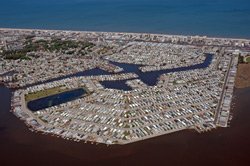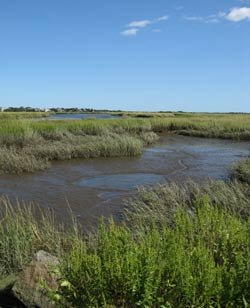Estuary Habitat Loss and Degradation
What's the Problem?
Pressures on Our Coasts

Photo credit: Andy Serrell

As coastal populations increase, the conversion of open land and forest to urban development and agricultural uses is a significant threat to natural habitats. The below activities can decrease natural areas and threaten remaining habitat by causing increased runoff of sediment, nutrient and chemical pollutants to these areas:
- Commercial, industrial and residential development.
- Highway construction.
- Marina development.
- Diking, dredging, filling and bulkheading.
Why does this matter? In coastal watersheds, many of the same areas that attract humans because of their beauty and economic opportunity also perform important ecological functions. These areas are utilized by both wildlife and humans and are essential to both. Link to Contributing Factors for an interactive look at the variety of activities that contribute to habitat loss and other problems facing coastal watersheds and estuaries.
Healthy Habitats Provide Much-Needed Benefits

The continued health of marine and estuarine systems, and the human systems that depend on them, relies on the maintenance of high-quality habitat. These natural areas provide essential food, cover, migratory corridors and breeding/nursery areas for many coastal and marine organisms. For humans, they provide an economic basis for coastal tourism, viable seafood industries and ecological functions far beyond aesthetics.
Forests and wetlands protect water quality; riparian and coastal wetlands provide storage for excess water during flooding, as well as support valuable fisheries. Barrier beaches and wetlands act as buffers protecting humans from coastal storms. Coastal waterways and adjacent natural lands provide recreational opportunities and wildlife viewing that help support coastal tourism.
Diminished and degraded habitats are less available to support healthy populations of wildlife and marine organisms. Additionally, they are less able to perform the economic, environmental and aesthetic functions that coastal populations depend on for their livelihoods and protection.
Learn more about local efforts and the habitat goals of the National Estuary Program (NEP).
